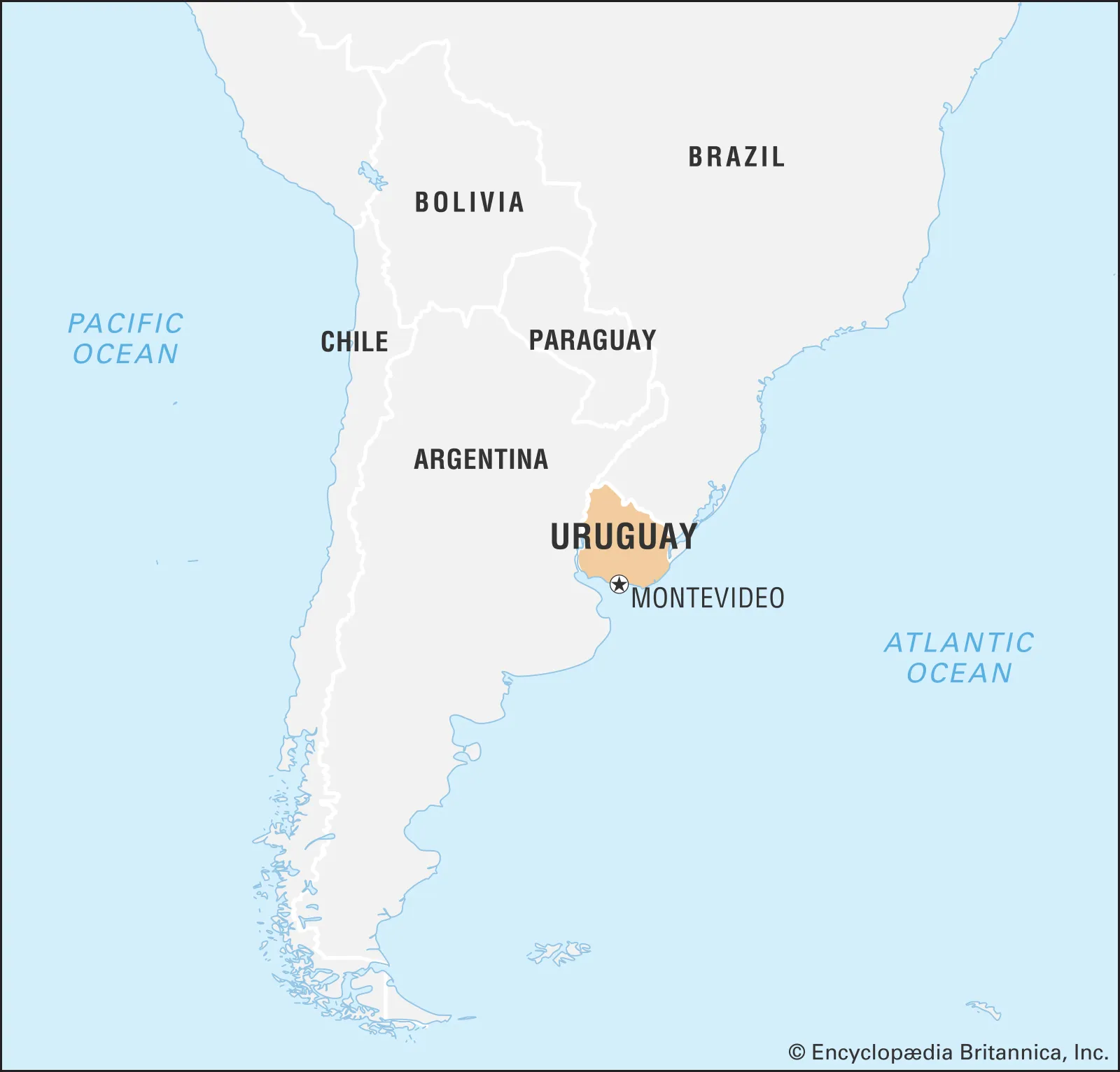Background: The enshittification of Argentina
This could be an effortpost purely on its own but I leave that task to our great friends from the southern hemisphere.
Argentina's July 9, 1989, Independence Day was historical for two opposing reasons. For the first time since 1928, a democratically elected president had been succeeded by another elected one—leaving aside the Peronista reelection in 1952. But this much-longed-for event happened amid feared, raving hyperinflation. (Nothing new ever happens). Stepping down was Raul Alfonsin, who had become president on December 10, 1983 following a violent military government that had taken power with a coup on March 1976, the SIXTH since 1930. 
Even though Argentina had been ridden with inflation for several decades, it still became more chaotic (proving no matter how shitty you think your positions are, it can still get shittier when it comes to economics) after a mega-devaluation and mega-tariff shock in June 1975 by the Minister of Economy Celestino Rodrigo, which infamously became known as the Rodrigazo. (Dude Spanish LeMayo)
Nine months later, after the coup, the military immediately tried to tame inflation with traditional IMF counter-cyclical measures, but to no avail. From the so-called hilariously named Rodrigazo, the country would live under what became known as a "high-inflation regime": verging on a 100 percent year rate of minimum inflation, but in most years, well over that level.
Note that In these situations, inflation almost becomes an index exchange  That is, there would be inflation because investors have priced it in already, as in inflation in future because inflation in past.
That is, there would be inflation because investors have priced it in already, as in inflation in future because inflation in past.
Pic rel: you walk into Argentina's Central Bank
So in 1978, the Argentinian government, fresh from the high off of winning the FIFA WC, introduced their most radical plan till date: la tablita
La Tablita ("the little chart") was a 1978 stabilization policy, a pre-gradual devaluation scale schedule combined with an external opening of financial and trade sectors. In the prevailing abundant, low-cost, international credit environment, large amounts of capital entered the country, pressing the national peso down, checking inflation, and cheapening imports.
Unfortunately, God hates Argentina and the retards who run Argentina hate the country even more.
@nuclearshill be like

Despite bringing down inflation, La Tablita was far from ending it. Hence, the peso appreciation became considerable, damaging domestic industrial goods.
On top of that, the foundations of this pyramid scheme, however, were highly frail. It depended on the continuous availability of cheap dollar credit in international markets,  something challenging to happen. Thus speculation against the peso grew. Spurred on by higher dollar rates and made possible by financial openness, many external and internal investors thrived on this terms of a "financial bicycle."
something challenging to happen. Thus speculation against the peso grew. Spurred on by higher dollar rates and made possible by financial openness, many external and internal investors thrived on this terms of a "financial bicycle."
To avoid the abrupt end of La Tablita, the government itself took external debt—mainly through state-owned companies—and made them available to speculative private agents or tried to gain their confidence by increasing the stock of international reserves.
The Arabs coming out to nuke Argentina in the ass 
After the 1979 Volcker shock because of the Arab oil embargo crisis, that raised dollar interest rates, the mounting dollar debt cycle became explosive. The dollar shortage led to a run on banks and a financial crisis in 1980, which the government had to save with rediscounts. The government established an official guarantee on deposits and, in February 1981, abandoned the Tablita schedule. Following an exceptional 10 percent devaluation of the peso, a new monthly devaluation chart was announced— greater than the original one, but insignificant in view of the accumulated appreciation in the exchange rate. In March 1981, it ended any kind of Tablita scheme and a new 30 percent devaluation was applied.
After years of making new deals (with the US; mercosur, with the IMF) and failing to keep any of the promises they made and finally coming to terms with its thirdworldness, in April 1988, the government declared a moratorium on the service of foreign debt. This led to losing the support of the IMF. Hence, the only resource of fresh dollars left was the World Bank. (aka 3rd world support).
The Spring Plan launched just months before the 1989 election, was a stabilization program conceived with the modest purpose of avoiding the hyperinflationary outburst before the presidential election in May 1989. Without being able to adjust tariffs because of their inflationary effects and without being able to tax, the government made a price agreement with the leading companies, which resulted in the reduction of the value-added tax from 18 percent to 15 percent, which led to a 0.5% drop off in GDP. In mere months.
However, the election itself was the main factor of instability. The three leading presidential candidates (including Eduardo Angeloz, from the official party) called for the exchange rate liberalization. Peronist Carlos Menem,  who widely led the polls, defied any justification of restraint, stating that it would interrupt external payments for 3 to 5 years, cut taxes 50 percent and give out a salariazo (100 percent increase in wages), among other populist and nationalist measures. Thus, exchange rate and fiscal instability are combined with political uncertainty. In retrospect, the only chance of The Spring Plan to reach its goal resided in the remote chance of a reversal of election polls in favor of the official candidate. Otherwise, with a foreseeable triumph of the opposing candidate, announcing a populist and nationalist platform, an abrupt run of funds to the dollar was unavoidable.
who widely led the polls, defied any justification of restraint, stating that it would interrupt external payments for 3 to 5 years, cut taxes 50 percent and give out a salariazo (100 percent increase in wages), among other populist and nationalist measures. Thus, exchange rate and fiscal instability are combined with political uncertainty. In retrospect, the only chance of The Spring Plan to reach its goal resided in the remote chance of a reversal of election polls in favor of the official candidate. Otherwise, with a foreseeable triumph of the opposing candidate, announcing a populist and nationalist platform, an abrupt run of funds to the dollar was unavoidable.
Fearing the inevitable the World Bank withdrew its support in January 1989.
The consumer price index, around 7 percent per month during the last quarter of 1988, doubled in March 1989 and again in April. Two months later, it was out of control.
Menem won in the midst of all this pandemonium. The handover of command was planned for December, but the outlook for the next five months was chaotic. Hence, the succession was brought forward for July 8.
The failed attempts to privatize several companies, the continuous erosion of public income due to inflation, the freezing of wages with high unemployment that intensified social discontent, with some goods-shortage, additional power cuts due to droughts that affected the hydroelectric plants, and the appearance of looting in Greater Buenos Aires, all combined to fuel the severe crisis.
With the change of government, inflation fell rapidly, but only momentarily. Amid prices still going out of control, a temporal confiscation of bank deposits was made, forcedly exchanging them with government treasury bonds (the Bonex plan). After two further hyperinflationary outbreaks between 1990 and 1991, new economic minister Domingo Cavallo could finally curb rising inflation with a radical currency board-style convertibility of the Argentinian peso (rebranded as The Austral in the mid 80s)  to the American dollar.
to the American dollar.
The Uruguay Angle
What is an Uruguay?
Like all normal Americans, I had zero knowledge where Uruguay was, how much does one Uruguayan foid cost etc important questions before I started reading about them. Looking at them, few of us would envy them.
As Menem's Argentina was finally realizing its retarded policies, like Menem's Argentina during the 1990s, Uruguay had embarked upon a full-scale liberalization of its economy through liberalization of the capital and current account on the balance of payments. Uruguay's banking system was based on local private-owned banks, foreign banks, and large public banks.
During the 1990s, the Uruguayan economy performed relatively well; by the decade's end, it was a middle-income country with a per-capita income of US$6000. In 1999 the Uruguayan economy suffered a significant economic recession that resulted in multiple implications for the country's fiscal debt, the debt-to-GDP ratio, and the profitability and liquidity of the banking sector.
The twin devaluation of the Brazilian and Argentinian currency near Y2K hit the competitive position of Uruguay's exports and led to a currency appreciation. Like any other 3rdworldie, it immediately set conditions to terminate the exchange rate commitment of the Uruguayan currency that had helped stabilize the public debt during the 1990s. As a result of the 1999 prolonged recession, it was registered first as a major fiscal crisis, recession-triggered revenue reductions led the government deficit to surge from 38 percent of GDP in 1998 to 58 percent of GDP by 2001. By 2001 the public sector debt amounted to roughly US$107 billion.
This consecutively increased the country's dependence on foreign capital and investors: the deepening of the public deficit caused by the fiscal crisis forced Uruguay to issue foreign currency-denominated bonds and debt certificates to finance the Uruguayan debt. 
By December 2001, both liabilities and assets of the Uruguayan banks were highly dollarized. (Nearly 83% of public debt was in foreign currency). For reference if the US had that problem today, that would mean nearly 31 Trillion Dollars of debt in Chinese/Japanese/Euro currencies.
On the liability side, liquid foreign currency deposits amounted to 90 percent of total deposits, of which 47 percent were deposits by non-residents. On the asset side, about 75 percent of total loans were denominated in foreign currencies. By the time the crisis began, the two largest public banks (Banco de la Republica Oriental del Uruguay (BROU) and Banco Hipotecario del Uruguay (BHU)) (ching chong names, just remember BROU and BHU) lay in critical financial condition because their ratio of non-performing loans to total loans was on average 39.1 percent, compared to 5.6 percent for the private banks. 
This chicanery along with growing share of total debt financed through issuing debt certificates abroad and in foreign currencies made the country and its banking sector extremely vulnerable to external shocks.
This came in the form of an Argentine shock
Throughout the postwar decades, Brazil and Argentina were the main trading partners of Uruguay. Argentina, even more than Brazil, was tied to the direction of the Uruguayan economy. As was the case with the early 1980s crisis, any time Argentina abandoned its price stabilization plan, the GDP of Uruguay contracted substantially. In contrast, any time Buenos Aires GDP declined, Uruguay's GDP grew modestly. (Exports needed, latina foids, if one fails, the other has to step up)
As the banking sectors of the two countries became interdependent. In particular, Argentinean savers and investment companies placed large amounts of funds with Uruguayan private and publicly owned banks. (Argentinians trusted their government so little, they were willing to invest in a tiny ass country, so much so that in time they became that country's main creditor  ) The Uruguayan banks had become safe financial outlets for Argentinean savers. By the end of 2001, 45 percent of Uruguay's total deposits came from Argentinean investors.
) The Uruguayan banks had become safe financial outlets for Argentinean savers. By the end of 2001, 45 percent of Uruguay's total deposits came from Argentinean investors.
Not only this, buy at the time, the two national public banks (BROU & BHU. Remember them? This is them now. Feel old yet?) were owned by Argentinean financial groups. How you call something that is neither nationalized nor publicly owned a national public bank beats me. But that's how definitions work in Uruguay. And these were not the only banks to have their shit rocked. All the largest Uruguayan banks were primarily exposed to either Buenos Aires' public debt or the largest Argentinean banking groups.
In December 2001, the Argentinean authorities approved capital controls and deposit freezes on Argentine nationals. This decision, coupled with the termination of Buenos Aires' currency pegging  to the US dollar, prompted many Argentinean investors to withdraw funds from Uruguay, thus plummeting its financial sectors into a liquidity crisis. The two largest private banks of Uruguay, Banco de Galicia Uruguay and Banco Comercial, were hit the most by capital outflows. Banco de Galicia Uruguay, then the second largest Uruguayan bank by assets, was a subsidiary of Banco de Galicia, the largest Argentinean group. (Just sell the entire nation to Argentina faggots)
to the US dollar, prompted many Argentinean investors to withdraw funds from Uruguay, thus plummeting its financial sectors into a liquidity crisis. The two largest private banks of Uruguay, Banco de Galicia Uruguay and Banco Comercial, were hit the most by capital outflows. Banco de Galicia Uruguay, then the second largest Uruguayan bank by assets, was a subsidiary of Banco de Galicia, the largest Argentinean group. (Just sell the entire nation to Argentina faggots)
As its banking activities revolved by and large around taking deposits from Argentinean banks and companies and lending to the same type of clients, the freeze of deposits and the enforcement of capital controls hit Banco de Galicia Uruguay, which suddenly suffered from a liquidity crisis. This led the Central Bank of Uruguay to suspend its activities in February 2002. As much as Banco Galicia, Banco Comercial, the largest private bank of Uruguay, was overexposed to Argentine's borrowers: it held a large amount of the Argentinian government's public debt. It was a significant creditor to Grupo Banco General de Negocio, a leading financial holding in Argentina. In 2002, this two-fold overcommitment to Argentina was the leading cause of the liquidity crisis that shook Banco Comercial that year.
Banco is a funny word NGL 
By March, 12 percent of total bank deposits had been withdrawn, mostly by non-residents. This downward sloping trend continued even after the implementation of measures by the government and the International Monetary Fund (IMF) to forestall the liquidity crisis. By May 2002, 18 percent more deposits had been withdrawn; this time, non-resident withdrawals were paired with money cashed by residents from public banks.
Why should Argentinians have all the fun?
- some Uruguayan(before jumping off a bridge after seeing an Argentinian doing it)
This faggotry reached its crisis point in July when the run on dollar deposits was coupled with a rush to cash local currency deposits. By mid-summer, most private banks had become insolvent; on the other hand, the public banks, though liquidity support provided by the IMF amounted to US$1,1221 million as of August 2002, suffered from significant liquidity imbalances and extremely precarious balance sheets.
In July, Uruguay's foreign currency reserves, which by December 2001 amounted to US$3.1 billion, reached the lowest level ever of US$650
$650
The crisis that erupted in 2002 had striking side effects on the Uruguayan currency, foreign exchange reserves, and the country's capability to service the public debt. Rather than merely affecting the liquidity position of Uruguayan private banks, massive capital outflows reduced the country's foreign exchange reserves.
Assuming the country's international reserves as of December 2001 as a benchmark, by the second half of 2002 they had declined by 80 percent. This decline in international reserves jeopardized the exchange rate commitment and, thus, the likelihood of servicing the public debt. (the only part that any government cares about beyond optics) This trajectory of the financial crisis led the Uruguayan authorities in July 2002 to halt the exchange rate commitment and to approve a 27 percent currency devaluation that led exports to temporarily bounce back by the end of 2002. But devaluation has a downside in terms of debt sustainability.  The termination of the Uruguayan exchange rate commitment and its devaluation set the national debt to unsustainable limits.
The termination of the Uruguayan exchange rate commitment and its devaluation set the national debt to unsustainable limits.
The recurring deposit withdrawals that started in the first half of 2002 led to a credit crunch that triggered systematic curtailing of credit by private banks to the non-banking sector. During that year, banking credit to the non-financial sector contracted by 37 percent. Consecutively the GDP contracted by about 10%.
How the crisis was contained
Since the beginning, the crisis appeared to be a matter of liquidity shortage affecting a limited section of the banking system. Therefore, liquidity assistance to either the largest private banks of Uruguay or the foreign-owned banking institutions, as well as the public banks, represented an unfinished line of economic intervention by the Central Bank of Uruguay, the government, and the IMF, the three leading institutions that came to the rescue. Amidst a further deepening of the banking liquidity crisis in early summer, in July 2002 a new financial facility was established, the Fondo para la Fortificacion del Sistema Bancario, which amounted to US$2.5 billion.
it's okay little fella, here's some change. Keep it 
Notwithstanding the scale of this fund in July, both foreign exchange reserves and the liquidity of private banks got worse. On July 30, this Fondo's financial operations were suspended and a bank holiday began.
Crisista time? More like fiesta time 
Shortly after the removal of the bank holiday on August 5, 2002, a run on deposits began again. Amidst this seemingly neverending crisis, the government approved a law that, by combining an effort by the state finance with financial assistance provided by three leading international economic institutions—the IMF, the International Bank for Reconstruction and Development (IBRD), and the Inter-American Development Bank (IADB)—focused on both protecting dollar-denominated deposits in the country and initiating a suspension of the operations of the three largest private banks that paved the way for their restructuring or liquidation.
total banco destruction 
The new law made provision for having the BROU absorb all the foreign currency deposits and time deposits held at BHU and for suspending the operations of Banco Comercial, Banco de Montevideo-Caja Obrera, and Banco de Credito. In addition, it set conditions for their restructuring or liquidation in the future. By the beginning of fall 2002, this set of measures led to a decline in total withdrawals and a resurgence of deposits by residents, which by 2005 had returned to their July 2002 level. During the fall of 2002 and 2003, the second set of crisis management measures was undertaken to restructure public banks' debt and strengthen the structure of banking regulation and supervision in Uruguay, which was historically not well structured.
A selected number of loans by BROU, which throughout 2002 had lost roughly 66 percent of total deposits, were absorbed by a newly created state entity, while the bank's lending operations were redirected to peso-denominated operations. A credit risk-management mechanism was established to reduce non-performing loans. The BHU, whose dollar-denominated deposits accounted for 77 percent of total deposits while 94 percent of total loans were peso-denominated, was severely rocked by the peso's devaluation. The bank was radically restructured by the Ley del Fortalecimiento del Banco Hipotecario del Uruguay in December 2002, limiting its banking operation to housing saving plans and issuing of a limited number of mortgages, but prevented the BHU from taking deposits.
Concerning the private banks, the three largest institutions were liquidated. The Banco Comercial and Banco Montevideo Caja Obrera were placed under liquidation, and a new financial institution, Nuevo Banco Comercial, was established. The purpose of this new institution was to issue Certificates of Deposits to finance the acquisition of the assets of the two banks under liquidation.
Concerning the Banco de Credito, the third largest private bank, the government recapitalized it several times and then, in February 2003, placed it under liquidation.
This taking a chainsaw action on the financial side of the banking crisis was paired with legislative initiatives to strengthen the supervisory and regulatory system charged with presiding over the national banking system.
Another law was passed to strengthen the Central Bank of Uruguay so as to not leave it as toothless as the Argentinian beggar asylum of a CB.
That new law imposed new requirements on banking activities that included higher reserve requirements for deposits by non-resident investors, several rules to reduce foreign exchange risks and improve lending-decision making by national banks, and compulsory disclosure by banks of relevant financial information about their borrowers' credit solvency.
By the end of 2002, the liquidity crisis that hit the banking system had triggered a contraction of total bank deposits by residents by about 46 percent and a reduction of total deposits by foreign investors of 65 percent. As a result of the crisis, the country's GDP declined by 11 percent, whereas total public sector debt grew by 26 percent.
In this situation, many international investors (read US, nobody except the US government and investors knew about Uruguay outside Latin America) envisaged the possibility of a sovereign default in the wake of what happened in Argentina.
But credit (kek) where credit's due. The financial measures adopted to restructure and liquidate the banking system, coupled with several regulatory and supervisory initiatives aimed at preventing the country from future crises triggered by external shocks, placed the country on track to full recovery and prevented Uruguay from suffering terrible consequences in terms of inflation and deficit.
By 2003 GDP had risen by over 12 percent, inflation had declined to 10 percent, the financial system's deposits had regained US$800 million, and the primary surplus had once again soared to 4.1%.

















Jump in the discussion.
No email address required.
I'm not reading this. But if you guys have the opportunity to go to Uruguay visit Montevideo for a day and then spend another day in Maldonado/Punta del Este and take the pics at the beach near the stupid fingers buried on the sand.
After going back to Montevideo take the ferry to Buenos Aires where you'll enjoy a more beautiful, bigger, and charming hustle and bustle.
Jump in the discussion.
No email address required.
Jump in the discussion.
No email address required.
More options
Context
Nah frick the hustle and bustle and exposed brick I'm going to Ushushushushushushibainu to see penguins
lol funny little guys

Barioloche or El Calafate looks nice and far from people, too.
Cuanto cuesta un terreno en la patagonia?
Jump in the discussion.
No email address required.
The Virgin "visiting the Argentine with the boys and a selfie stick to take pictures on le hustle and bustle"
The Chad "visiting Argentina with the boys with a warm jacket, fish sticks, forged export papers and a dog crate to secure a penguin"
The Sigma Male "visiting Argentina with the boys wearing breitling watches, a case of C4 and commercial tickets from Santiago Chile- London to blow up the stockpile of Exocets"
Jump in the discussion.
No email address required.
More options
Context
Boludoo yo también quiero saber. Bariloche es divino, ahí cerca también tenés a Villa la Angostura que es más chica pero igual de hermosa y en torno al lago Nahuel Huapi. Aunque terrenos en esos lugares no van a ser muy baratos porque son zonas turísticas.
En Chubut y Neuquén podés encontrar laburo en la industria petrolífera y son igual de frías que Río Negro.
Jump in the discussion.
No email address required.
________________________
Mientras tanto, en EE.UU.
!latinx
Jump in the discussion.
No email address required.
More options
Context
Lamentablemente la especulación se está comiendo todo en el sur también. Mendoza es lo más accesible en la cordillera me parece, después tenés que garpar 100 mil verdes en las afueras de bari o menos por terrenos podridos asediados por mapuches
se está comiendo todo en el sur también. Mendoza es lo más accesible en la cordillera me parece, después tenés que garpar 100 mil verdes en las afueras de bari o menos por terrenos podridos asediados por mapuches 
Jump in the discussion.
No email address required.
Se me esfuma el sueño de mudarme a la Patagonia
Roca 2.0 para cuando?
Jump in the discussion.
No email address required.
More options
Context
More options
Context
More options
Context
More options
Context
Do ordinary Argentinians hate Uruguayans and vice versa?
Jump in the discussion.
No email address required.
No, Uruguay is culturally equal to the Buenos Aires province and city. Montevideo and Buenos Aires even share the same accent and you won't be able to tell them apart except for a few words the Uruguayans say different (they say "guri" like South Brazilians instead of pibe and call tennis shoes "championes" instead of zapatillas).
Jump in the discussion.
No email address required.
Uruguay should be seen as the Canada of Argentina
Jump in the discussion.
No email address required.
Uruguay is the Canada of Brazil weirdly enough. Uruguay always wanted to join Argentina but it was invaded by Brazil and then it became a tampon state as Brazil forbade them of ever joining Argentina.
Also, when Bolsonaro was elected the leftoid !macacos threatened to move to Uruguay (as they have legal abortion and dude, weed lmao).
Jump in the discussion.
No email address required.
It's called a "buffer state" in burger-speak
Jump in the discussion.
No email address required.
Da na mesma, a Cisplatinx é a menstruação do RS.
https://pt.m.wikipedia.org/wiki/Estado-tamp%C3%A3o
Segunda vez que fui pego usando um lusofonismo (coluna/spine foi outra). E de novo foi um BR me corrigindo.
Jump in the discussion.
No email address required.
essa é uma das palavras em que eu aprendi o significado primeiro em inglês e fiquei totalmente perdido quando escutei em português.
Que caralhos é um tampão? Uma tampa grande? Malditos portugueses e sua língua estupida
Jump in the discussion.
No email address required.
More options
Context
More options
Context
More options
Context
More options
Context
More options
Context
More options
Context
More options
Context
More options
Context